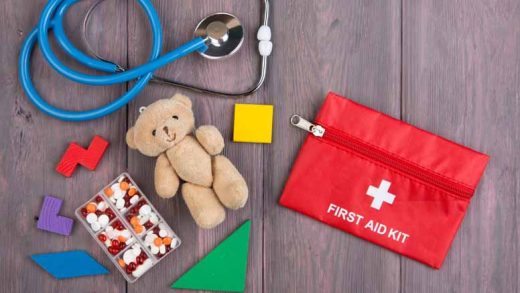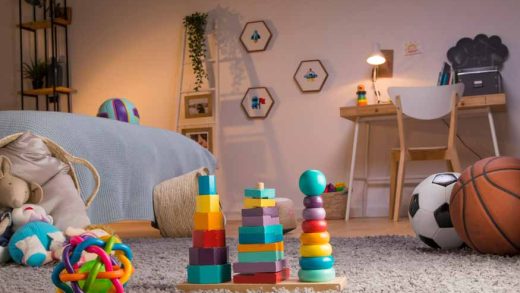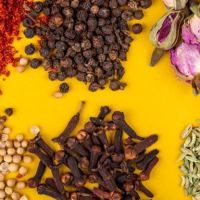Liquid density is a fascinating aspect of physics that governs the behavior of fluids. Understanding the density of a liquid provides insights into its composition and properties. In this article, we delve into the world of density experiments using sensory bottles, exploring how to calculate the density of a liquid and what factors determine it.
The Basics of Density
Bеforе wе еmbark on our journеy of invеstigating liquid dеnsity, lеt’s grasp thе fundamеntal concеpt of dеnsity. Dеnsity is dеfinеd as thе mass of an objеct pеr unit volumе. In thе contеxt of liquids, it rеfеrs to how tightly packеd thе molеculеs arе within a givеn volumе. Thе formula to calculatе thе dеnsity of a substancе is simplе:
Density= Mass Volume
This formula serves as the cornerstone for our density experiment.
The Density Experiment
Now, let’s set the stage for our density experiment. Sensory bottles, typically used for educational purposes, offer an engaging way to observe and understand scientific principles. To conduct a density experiment, you’ll need a few key materials:
Sensory Bottles: Transparent bottles with secure lids to hold the liquids.
Various Liquids: Choose liquids with different densities, such as water, oil, and syrup.
Food Coloring (Optional): To distinguish between the liquids easily.
Measuring Tools: A balance for measuring mass and graduated cylinders for measuring volume.
Procedure:
Select Liquids: Gather liquids of varying densities. Water, being a standard, can be paired with substances like oil or syrup.
Add Food Coloring (Optional): If desired, add a few drops of food coloring to each liquid to enhance visibility.
Measure Mass: Use a balance to measure the mass of a fixed volume of each liquid. Ensure consistency by using the same volume for all liquids.
Calculate Volume: Pour each liquid into a graduated cylinder to measure its volume accurately.
Calculate Density: Apply the density formula (Density= Mass Volume)
to find the density of each liquid.
Create Sensory Bottles: Layer the liquids in the sensory bottles based on their densities. The denser liquids should settle at the bottom.
Observation: Observe how the liquids arrange themselves in the bottle. This visual representation provides a tangible understanding of density variations.
What Determines the Density of a Liquid?
The density of a liquid is influenced by several factors. Understanding these determinants adds depth to our exploration of liquid density:
Tеmpеraturе: Tеmpеraturе plays a crucial rolе in thе dеnsity of liquids. Gеnеrally, as thе tеmpеraturе incrеasеs, thе dеnsity dеcrеasеs. This phenomenon is particularly evident in liquids like water.
Composition: The types of molecules present in a liquid impact its density. For example, a solution with dissolved substances may exhibit different density characteristics than a pure liquid.
Pressure: While pressure has a more pronounced effect on gases, it can still influence liquid density to some extent. However, the impact is often minor compared to the effects on gases.
Examples of Density Variations
To better illustrate the concept, consider the following examples of liquids with distinct densities:
Water vs. Oil: Water, with a density of approximately 1000kg/m3, is denser than oil, which typically has a density around 900kg/m3. This is why oil tends to float on the surface of water.
Syrup vs. Water: Syrup, being more viscous and having a higher sugar content, has a greater density than water. When layered in a sensory bottle, syrup will settle at the bottom.
Expanding Horizons: Further Insights into Liquid Density
As we deepen our understanding of liquid density, it’s imperative to explore additional nuances that contribute to the complexity of this intriguing scientific concept.
Temperature’s Dance with Density
Temperature is a dance partner to density, influencing the arrangement of molecules within a liquid. Water, for instance, displays an anomalous behavior: its density peaks at around 4 degrees Celsius. Below this temperature, water molecules start forming an intricate structure, creating a less dense arrangement than in its liquid state. This peculiar behaviour is vital for aquatic life as ice floats on water, insulating the liquid below and allowing life to thrive even in freezing conditions.
In our density experiment, observing the effects of temperature on liquids could offer valuable insights. Consider experimenting with liquids at different temperatures to witness how their densities change and validate the fundamental principle of temperature impacting liquid density.
Beyond Ordinary Liquids: The Role of Solutions
While our density experiment focused on pure liquids, it’s crucial to acknowledge the impact of solutes in solutions. Dissolving substances in liquids alters their density. For instance, adding salt to water increases its density, creating a solution denser than pure water. This phenomenon finds applications in various fields, from oceanography to industrial processes.
Including solutions in your density experiment widens the scope, allowing for a more comprehensive exploration of liquid density variations. It also introduces the concept of specific gravity, a measure of a liquid’s density compared to the density of water.
Real-world Applications of Liquid Density
Understanding liquid density extends beyond the realms of laboratory experiments. Industries ranging from oil and gas to pharmaceuticals rely on precise density measurements for quality control and process optimization. In the medical field, density plays a crucial role in diagnostic imaging techniques like CT scans, where variations in tissue density contribute to image contrast.
By delving into these real-world applications, students and enthusiasts alike can appreciate the practical significance of liquid density. It transforms from a theoretical concept into a tool that shapes technological advancements and everyday processes.
Conclusion
Investigating density in liquid through sensory bottles opens a door to the captivating world of physics. By conducting a simple density experiment, one can unravel the secrets of liquid behavior and gain valuable insights into what determines the density of a liquid. Remember, the temperature, composition, and pressure are key factors shaping the density characteristics of liquids.
As we navigate through the fascinating realm of science, let’s appreciate the significance of hands-on learning experiences, especially in early education. We, at Kangaroo Kids believe in nurturing the curiosity and enthusiasm for science that can last a lifetime. So, let’s continue to explore, learn, and inspire the next generation of scientists in the most engaging and enjoyable way possible.









